A Hyundai Sonata’s recommended tire pressure is 34 pounds per square inch (PSI). Maintaining this pressure is important so that your tires wear evenly and you arrive at your destination safely.
For your vehicle to be most efficient, make sure your tire pressure is just right—not too low and not too high. Improperly inflated tires can result in bad fuel economy, steering issues, or even a dangerous blowout.
You could end up paying a lot for repairs down the road simply because your tires needed air. Avoid all this by regularly checking your Sonata’s tire pressure.
Car insurance
super app
Jerry
is here to break down how to manage Hyundai Sonata tire pressure. Learn how to check tires, how to reset the warning light on your dashboard, and more.
Stick around until the end, and we’ll even provide tips for lowering
Hyundai Sonata insurance costs
(or insurance for any other vehicle)!
What is the right tire pressure for a Hyundai Sonata?
For both the front and rear tires on a Hyundai Sonata, the correct PSI is 34. You can confirm this info by referring to your owner’s manual or the sticker on the doorframe on the driver’s side.
Trim level often dictates the recommended PSI. The
Hyundai Sonata SE
, for instance, also needs 34 PSI. The
Hyundai Sonata SEL Plus
, on the other hand, requires 34 to 35 PSI. It’s only a slight difference but accuracy counts here.
Tire pressure recommendations for other Hyundai vehicles
Vehicle | Front tire pressure | Rear tire pressure |
|---|---|---|
2022 Hyundai Tucson | 35 PSI | 35 PSI |
2022 Hyundai Sante Fe | 35 PSI | 35 PSI |
2022 Hyundai Kona LE | 36 PSI | 36 PSI |
2022 Hyundai Palisade | 36 PSI | 35 PSI |
2022 Hyundai IONIQ | 36 PSI | 36 PSI |
2022 Hyundai Santa Cruz | 35 PSI | 35 PSI |
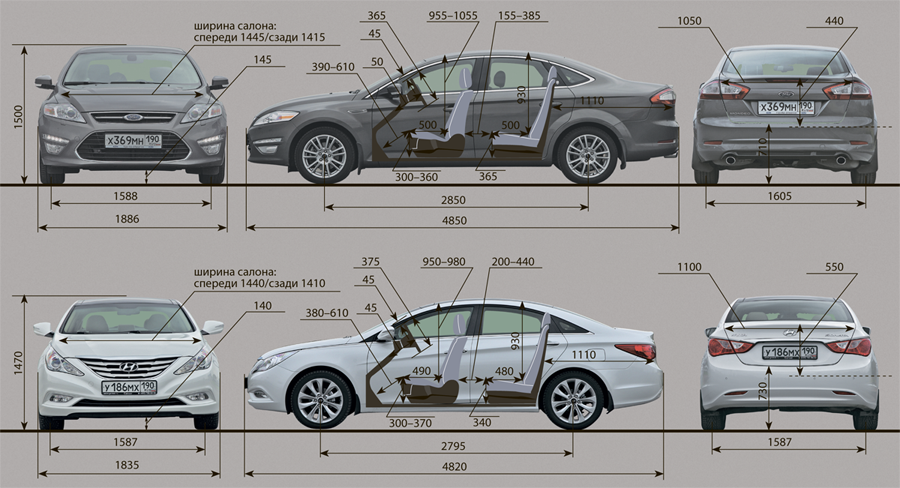
ZIP Code
ZIP Code
Find Savings!
No long forms. No spam calls. Free Quotes.
4.7/5 App Store Rating, 8,100+ Reviews
Trusted by 1.5+ Million Customers.
Don’t forget that different types of tires need different amounts of tire pressure. High-performance tires may have different recommended tire pressures than the tires that come standard with your Hyundai.
So, if you modify your tires, make sure you know their specific tire pressure requirements.
How to check Hyundai Sonata tire pressure
Each tire on a Hyundai Sonata is equipped with a tire pressure monitoring system (TPMS). This will light up if at least one tire is severely under-inflated. Once this telltale sign illuminates, you need to check your tire pressure and add air to the recommended level.
You don’t have to wait for a sign, though. In fact, these monitoring systems notoriously fail. So, the best strategy is to regularly check your tire pressure.
So, the best strategy is to regularly check your tire pressure.
To check tire pressure, remove the valve stem cap from each tire and then push a tire pressure gauge onto the valve stem. This will give you a reading and indicate whether you need to add or remove air.
You should be on the lookout for some low-key indicators of tire issues. These include decreased performance, an uneven ride, and wonky steering. Whatever the reason for your concern, you should always inspect it right away.
RECOMMENDED
No spam or unwanted phone calls · No long forms · No fees, ever
ZIP Code
ZIP Code
Find insurance savings (100% Free)
How often should you check tire pressure?
Inspect your tire pressure monthly and before going on any long road trips.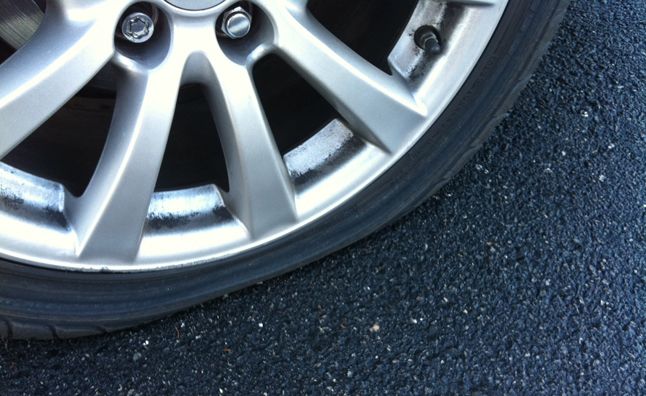
How to tell if your Hyundai Sonata needs new tires
You should change your Hyundai Sonata tires every five to six years. You might need to do it sooner if you notice wear and tear on the treads, which you can look for when checking the tire pressure.
If a tire has low tread depth and/or cracks and bulges, you should take your car to your mechanic to install new tires.
Three other signs that you need new tires for your Hyundai Sonata include:
Another way to inspect tires is with the penny method. It might seem weird but it works! All you have to do is insert a U.S. penny Lincoln’s-head-first into the tread. If the top of President Lincoln’s head is still visible, then you need new tires.
How to reset the Hyundai Sonata tire pressure monitoring system (TPMS) light
Sometimes the warning light connected to the TPMS won’t turn off. When this happens, you will need to
reset your tire pressure light
.
Here are a few ways to reset your TPMS:
Turn on your car battery, leaving the ignition off. Find the TPMS reset button and press it until the light blinks three times. Release the button, turn on the ignition, and the light should now be off.
Inflate the tires (including the spare tire) to three PSI over the recommended amount. Then, deflate and inflate them again to the exact recommended tire pressure.
Drive for at least 50 MPH for a minimum of 10 minutes. When you turn on the car again, the light should be off.
With the vehicle off, disconnect the positive battery cable under the hood using a wrench. Then, turn on the car, honk the horn for 3 to 5 seconds, and turn the car back off. Then, reconnect the
battery
.
Each of these methods should successfully reset the TPMS.
How to save on Hyundai Sonata insurance
Making sure you drive with the correct tire pressure can help you save on car-related expenses while increasing your Hyundai’s fuel efficiency.
Another proven way to save on ownership costs is to use the
Jerry
app to lower your
Hyundai car insurance costs
! Jerry is a licensed broker that partners with some of the nation’s top-rated providers. We’ll scan competitive quotes in under a minute, delivering the best deals straight to you.
Once you’ve found a better rate, Jerry’s team of agents will take the reins, handling all the paperwork and phone calls to help you switch providers. Users save an average of $800+ a year on
car insurance
.
“I was paying roughly $180 a month for insurance, but
Jerry
hooked me up with an Allstate full coverage plan for only $89! I’m so glad I trusted Jerry to find me a better plan.”—David A.
RECOMMENDED

Judith switched to Progressive
Saved $
725
annually
Alexander switched to Travelers
Saved $
834
annually
Annie switched to Nationwide
Saved $
668
annually
Emma Davies
If the tire pressure monitoring light comes on in your Hyundai Sonata, it means one or more of the car’s tires are under or overinflated. Car tires need to be inflated to a specific PSI to keep you safe whilst driving on the road and to prevent any damage to your tires.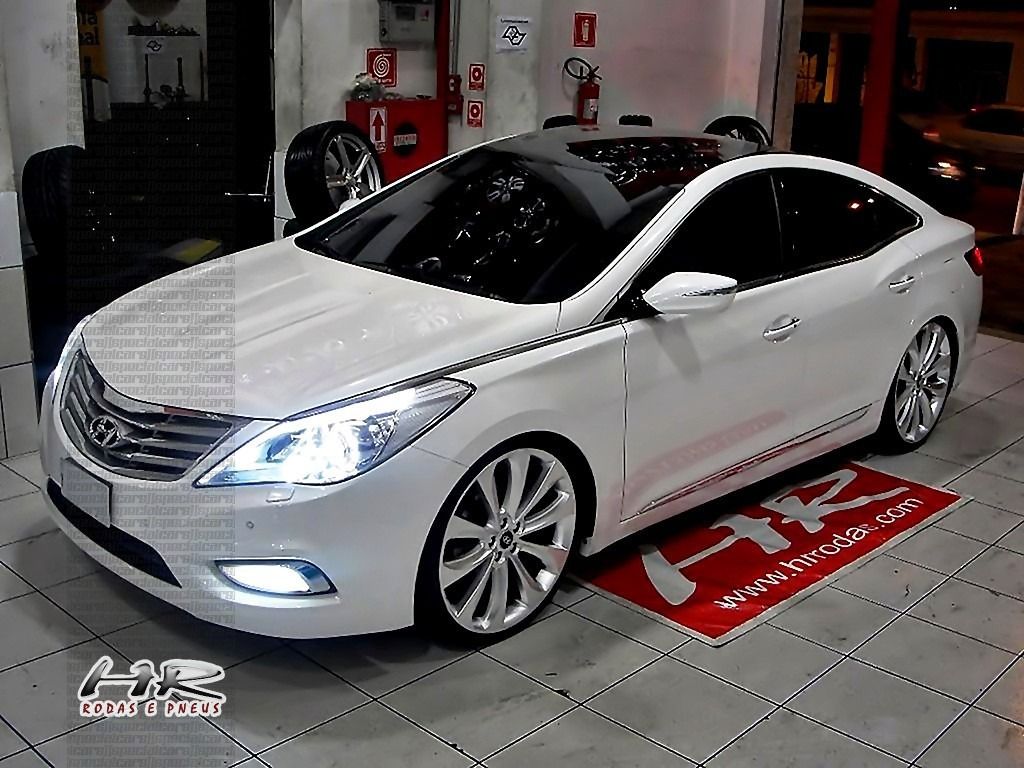
The recommended PSI for a Hyundai Sonata is 34. If the tire pressure monitoring system finds the tire pressure to be too high or too low it will trigger the tire pressure light on your car dash to turn on. Once your tires have been inflated to the recommended PSI, the tire pressure sensor will need to be reset.
If you do not know how to reset the Hyundai Sonata tire pressure sensor, we have all the information you need in this article. Keep reading for our step-by-step guides on how to reset the TPMS in all Hyundai Sonata models from 2007 to 2020.
When the TMPS sensors find one or more of your tires do not have the correct air pressure, a warning light will illuminate your car dashboard. The tire pressure warning light looks like a horseshoe with an exclamation mark in the center. Depending on what model and specification Hyundai you own, you may also get a warning message displaying which tire needs the air pressure correcting.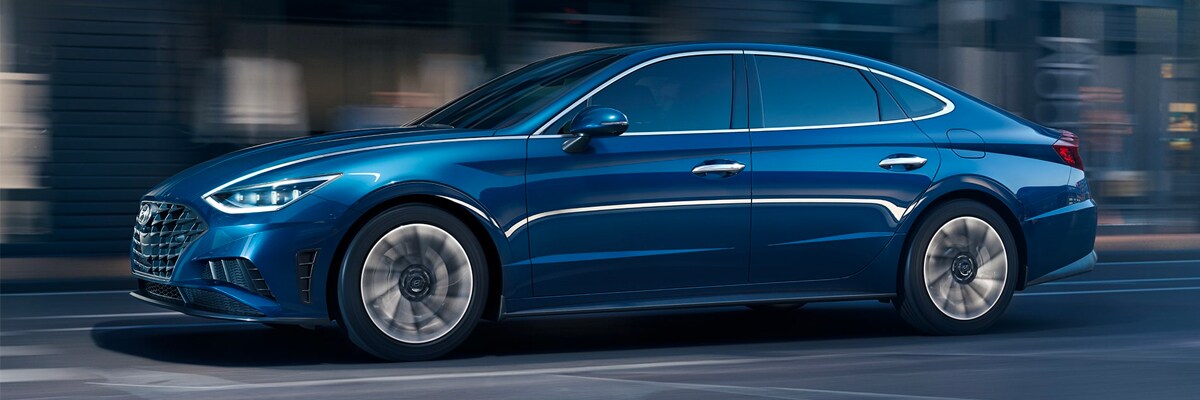
If your tire pressure light has been illuminated, it is important that you check your tires as soon as possible. If you cannot stop your car safely straight away, you should take the following steps –
Whilst a TPMS is a very useful system to have installed in your vehicle, regular tire maintenance and observation should not be ignored. The TPMS can detect when your tires do not have the correct air pressure but it is important that drivers continue to check the tread of their tires, especially in the colder months.
Resetting the TPMS sensors on your Hyundai Sonata is only necessary after inflating your tires if the system hasn’t automatically reset itself and the tire pressure light remains illuminated on the dashboard.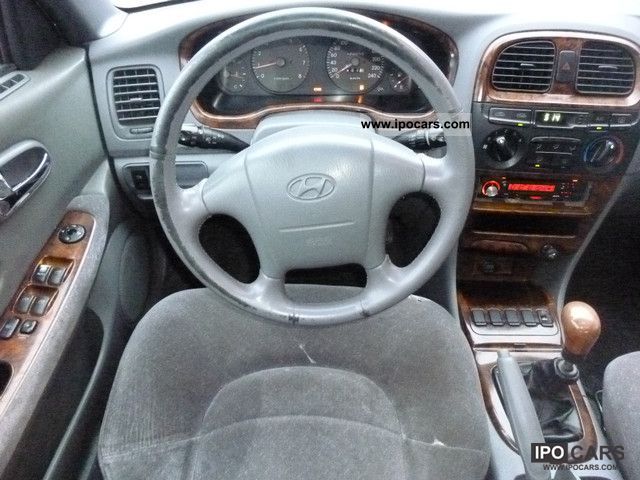
However, it is important to always reset the TPMS after changing or rotating your tires, this is so the sensors are able to accurately monitor the air pressure of the new tire/newly positioned tires.
Leaving your TPMS light on after inflating your tires, means you may not be aware of any problems with your tires in the future. Drivers can get used to having the tire pressure light on at all times, therefore not knowing exactly if and when a tire needs attention.
Keep reading for our step-by-step guides on how to reset the Hyundai Sonata tire pressure sensor.
The easiest way to reset the tire pressure sensor in all Hyundai Sonata cars is to drive the car for at least 10 minutes at a speed of 50mph or more.
If after traveling for 10 minutes the tire pressure light is still on, you will need to perform a manual reset. The method below will work in all Hyundai Sonata models from 2007 right through to 2018.
Step 1: Turn the key to the ON position but do not start the engine.
Step 2: Locate the TPMS reset button (usually underneath or to the side of the steering wheel).
Step 3: Press and hold the tire pressure monitoring reset button until the tire pressure warning light flashes 3 times.
Step 4: Release the TPMS reset button.
Step 5: Start the car and leave the engine running for 20 minutes to completely reset the sensor.
Step 6: Once the TPMS sensor has been manually reset, the tire pressure light should turn off.
If you can not find a TPMS reset button in your Hyundai Sonata, this may be because the system can not be manually reset and there is no button to be found. The TPMS in the Hyundai 2020 and 2021 models should automatically reset after you have driven for approximately 10 minutes at speeds of 50mph or more, after inflating the car tires.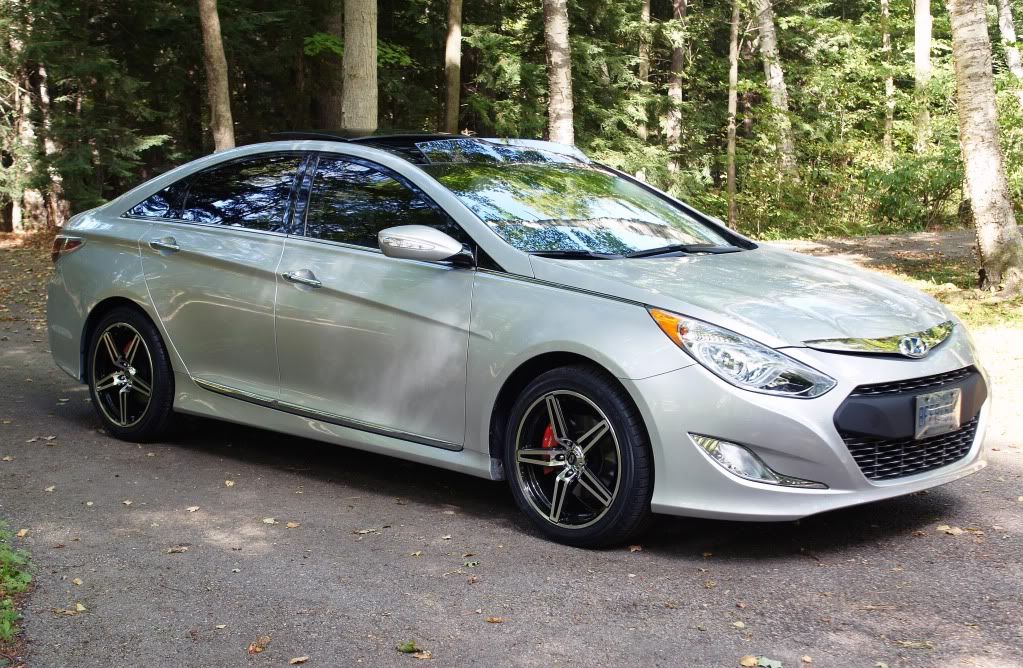
However, if you have recently added new TPMS sensors to your tires, you may need to relearn the new sensors to your vehicle’s tire pressure monitoring system. Most Hyundai vehicles will automatically program new sensors but in some cases, the TPMS light may stay on and a relearn may be necessary.
Here is a step-by-step guide on how to relearn new TPMS sensors for your Hyundai Sonata.
Step 1: Keep the vehicle stationary for 15 minutes after fitting the new sensors.
Step 2: Follow instructions in your car user’s manual to put your Hyundai into “relearn” mode – this can be done by using the dashboard controls. You may need to use a scanner to scan your sensors and update the ID codes into your car’s computer, check with your local Hyundai dealership if you are unsure.
Step 3: Drive above 20mph for around 20 minutes to allow the new sensor IDs to be learned by the vehicle.
TPMS stands for Tire Pressure Monitoring System. The TPMS is used in the majority of modern car models, including cars manufactured by Hyundai.
The TPMS is used in the majority of modern car models, including cars manufactured by Hyundai.
The tire pressure monitoring system monitors the air pressure in the car tires and sensors will automatically transmit a warning (the tire pressure light turning on) to the driver. The tire pressure light will activate when a tire is under or overinflated.
Where is the TPMS reset button on a 2017 Hyundai Sonata?The TPMS reset button in a 2017 Hyundai Sonata is located to the right of the steering wheel.
Where is the TPMS reset button on a 2013 Hyundai Sonata?The TPMS reset button in a 2013 Hyundai Sonata can be found under the steering wheel.
If your tire pressure light stays on after filling the car tires there may be issues with the tire pressure monitoring system. There may be a slow leak in one of your tires that is triggering the TPMS lights or it may be a sign that your car battery is low on power or there is a broken sensor in the system.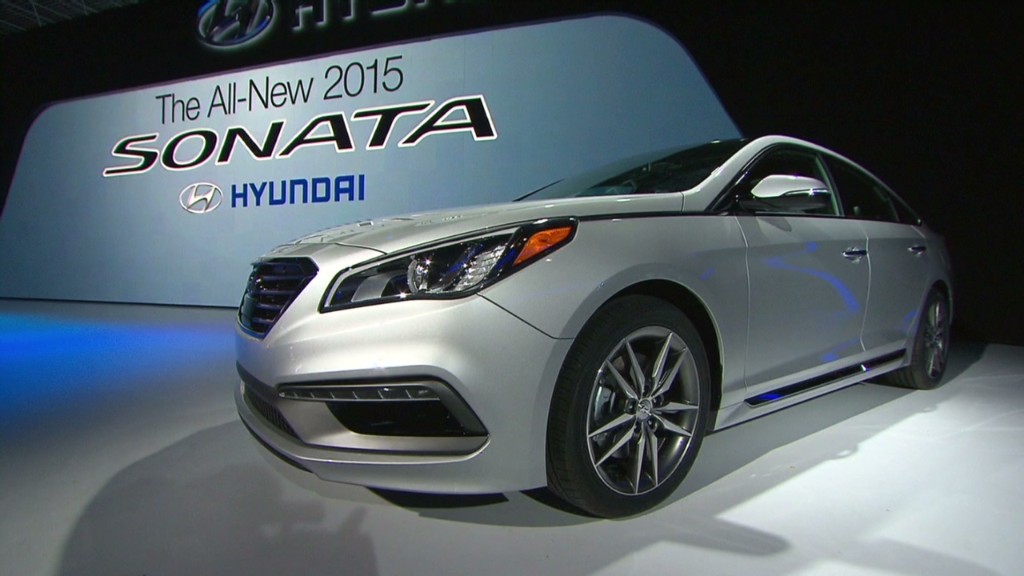
Like in the 2013 model, the tire pressure reset button is found under the steering wheel in the 2015 Hyundai Sonata.
What is the tire pressure for Hyundai Sonata?It is important that you inflate your car tires to the ideal pressure, driving over or underinflated can be dangerous and damaging to your tires. The ideal tire pressure for a Hyundai Sonata is 34 PSI.
Resetting the TPMS sensor in a Hyundai Sonata is a quick and easy process. If after inflating your new tires you notice the TPMS sensor light is still on, by following just a few simple steps you can have the system reset in no time.
If you need to reset the TPMS sensor in your Hyundai, we hope you have found the information in this article useful. In most cases drivers do not even have to manually reset the TPMS, the sensors and light should all automatically reset after the car has been driven for approximately 10 minutes.
Check out some of these Hyundai car guides from us:
Can I Take My Hyundai To Any Dealer For Service?
Where Is The TPMS Reset Button On A Hyundai Elantra?
How to Reset Tire Pressure Light on the Hyundai Tucson – TPMS Sensor Reset
Users browsing this forum: no registered users and 1 guest
#23150
Message wulf »
to come back to the beginning
#23155
Message Agent 007 »
It depends on what kind of rubber, as it is written on the doors of the sonata, 2. 3 atmosphere, but then I pump 2.0 atmosphere very hard, then it is comfortable and there is no harm to the rubber.
3 atmosphere, but then I pump 2.0 atmosphere very hard, then it is comfortable and there is no harm to the rubber.
Sonata 2.7 MT 10 Tagaz.
to come back to the beginning
#23159
Message Serg »
I have nokia hacka 205/60/16 download 2.2
Sonata - silver 2004 2 liter, handle, tinted 5% rear
#23160
Message wulf »
I have a Kumho Solus Kh27 205 55 R16
sonata 2005 2 liters on handle
to come back to the beginning
#23163
Message 848 »
Pump as much as you feel comfortable.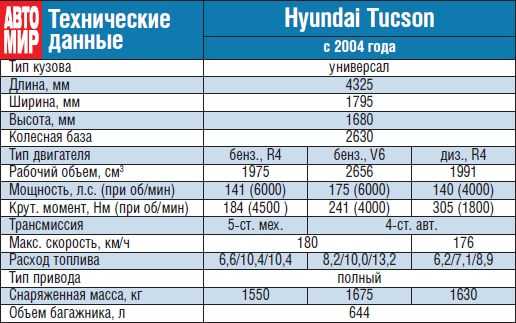 I was pumped up in montage 3, okay, it didn’t burst yet, I drove 150 on them along the highway, counting every bump as an ass.
I was pumped up in montage 3, okay, it didn’t burst yet, I drove 150 on them along the highway, counting every bump as an ass.
Lowered to 2.1 and everything was ok.
Turanza rubber (not stock) 205 65 16
to come back to the beginning
#23174
Message Krasnoarmeyets »
in the heat in the tire, the air heats up and, accordingly, the pressure is more than
205/60/16 in winter, 2.2-because. cold and air ................................... well, you understand me . ....... .........
....... .........
Was Sonata V 2.0 MT-2 Shind&Shreki&Catsmotorstuning&desing 2008
Now IX35
to come back to the beginning
#23266
Message Admin »
You need to pump 2.1-2.7 into the rubber of the standard size, depending on the brand of rubber and the average load of the car (2.7 is when you carry all the relatives from the dacha and another potato in the trunk to the eyeballs).
This achieves an optimum contact patch and wear.
to come back to the beginning
Return to "All about tires and rims (except sales)"
Go
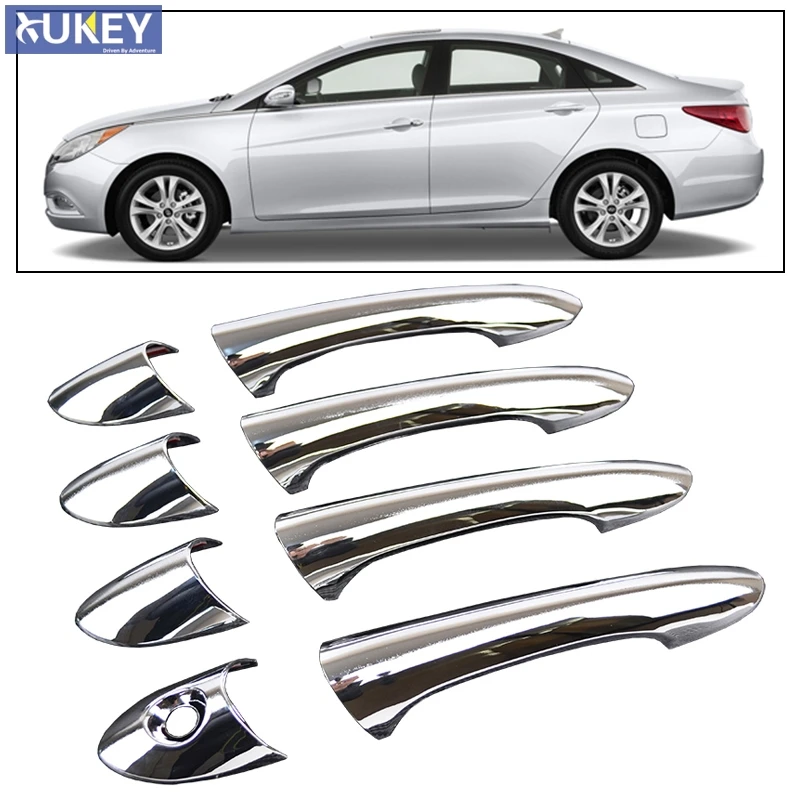 fluids (oil, antifreeze, brake fluid)
fluids (oil, antifreeze, brake fluid)  VIN inquiries.
VIN inquiries. 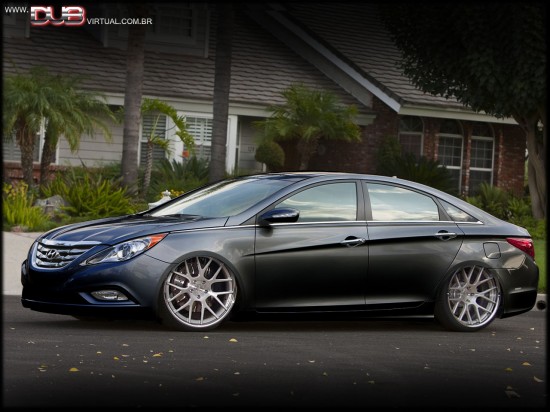 ru - questions, wishes, suggestions
ru - questions, wishes, suggestions Wheel pressure
Model
Modification
Recommended tire size
without a load with a load of
Summer Winter
Front wheels
rear wheels
Calculator operates in test mode! Found an error in the indicators or want to leave suggestions, please send via the feedback form on the Feedback page or the VK group! Errors with evidence base (photos, screenshots, links) are accepted! All information presented on the site is for informational purposes only! Thanks for understanding! 97 2 2.  1
1 2.1 Atos Prime 1.0 (40 kW) 155/70 R 13 75 T 2.1 2.1 2.2 2.2 2 2 2.1 2.1 Atos Prime 1.0 (40 kW) 175/60 R 13 77 T 2.1 2.1 2.2 2.2 2 2 2.1 2.1 Atos Prime 1.1 (46 kW) 155/70 R 13 75 T 2.1 2.1 2.2 2.2 2 2 2.1 2.1 Atos Prime 1.1 (46 kW) 175/60 R 13 77 T 2.1 2.1 2.2 2.2 2 2 2.1 2.1 i 10 1.1 (49 kW) 165/60 R 14 75 T 2.  3
3 2.3 2.5 2.5 2.2 2.2 2.4 2.4 i 10 1.1 (49 kW) 175/60 R 14 79 T 2.3 2.3 2.5 2.5 2.2 2.2 2.4 2.4 i 10 1.2 ( 57 kW) 165/60 R 14 75 T 2.3 2.3 2.5 2.5 2.2 2.2 2.4 2.4 i 10 1.2 (57 kW) 175/ 60 R 14 79 T 2.3 2.3 2.5 2.5 2.2 2.2 2.4 2.4 i 10 1.1 LPG (47 kW) 165/60 R 14 75T 2.3 2.3 2.5 2.5 2.2 2.2 2.4 2. 4
i 10 1.1 LPG (47 kW) 175/60 R 14 79 T 2.3 2.3 2.5 2.5 2.2 2.2 2.4 2.4 i 10 1.2 LPG (54 kW) 165/60 R 14 75 T 2.3 2.3 2.5 2.5 2.2 2.2 2.4 2.4 i 10 1.2 LPG (54 kW) 175/60 R 14 79 T 2.3 2.3 2.5 2.5 2.2 2.2 2.4 2.4 i 10 1.1 CRDi (55 kW) 175/60 R 14 79 H 2.3 2.3 2.5 i 20 1.2 (57 kW) 175/70 R 14 84 T 2.3 2.3 2.5 2.5 2.2 2.2 2. 4
2.4 i 20 1.2 (57 kW) 185/60 R 15 84 H 2.3 2.3 2.5 2.5 2.2 2.2 2.4 2.4 i 20 1.2 ( 63 kW) 175/70 R 14 84 T 2.3 2.3 2.5 2.5 2.2 2.2 2.4 2.4 i 20 1.2 (63 kW) 185/ 60 R 15 84 H 2.3 2.3 2.5 2.5 2.2 2.2 2.4 2.4 i 20 1.4 (74 kW) 175/70 R 14 84 T 2.3 2.3 2.5 2.5 2.2 2.2 2.4 2.4 i 20 1.4 (74 kW) 185/60 R 15 84 H 2. 3
2.3 2.5 2.5 2.2 2.2 2.4 2.4 i 20 1.1 CRDi (55 kW) 175/70 R 14 84 T 2.3 2.3 2.5 2.5 2.2 2.2 2.4 2.4 i 20 1.1 CRDi (55 kW) 185/60 R 15 84 H 2.3 2.3 2.5 2.5 2.2 2.2 2.4 2.4 i 20 1.4 CRDi (66 kW) 175/70 R 14 84 T 2.3 2.3 2.5 2.5 2.2 2.2 2.4 2.4 i 20 1.4 CRDi (66 kW) 185/60 R 15 84 H 2.3 2.3 2.5 2.5 2.2 2.2 2. 4
2.4 i 20 1.6 (93 kW) 185/60 R 15 84 H 2.3 2.3 2.5 2.5 2.2 2.2 2.4 2.4 i 20 1.6 CRDI (94 kW) 185/60 R 15 84 H 2.3 2.3 2.5 2.5 2.2 2.2 2.4 2.4 ix 20 1.4 (66 kW) 195/65 R 15 91 H 2.3 2.3 2.5 2.5 2.2 2.2 2.4 2.4 ix 20 1.4 (66 kW) 205/55 R 16 91 H 2.3 2.3 2.5 2.5 2.2 2.2 2.4 2.4 ix 20 1.4 (66 kW) 205/50 R 17 89 V 2. 3
2.3 2.5 2.5 2.2 2.2 2.4 2.4 ix 20 1.4 CRDi (66 kW) 195/65 R 15 91 H 2.3 2.3 2.5 2.5 2.2 2.2 2.4 2.4 ix 20 1.4 CRDi (66 kW) 205/55 R 16 91 H 2.3 2.3 2.5 2.5 2.2 2.2 2.4 2.4 ix 20 1.4 CRDi (66 kW) 205/50 R 17 89 V 2.3 2.3 2.5 2.5 2.2 2.2 2.4 2.4 ix 20 1.6 (92 kW) 195/65 R 15 91 H 2.3 2.3 2.5 2.5 2.2 2.2 2. 4
2.4 ix 20 1.6 (92 kW) 205/55 R 16 91 H 2.3 2.3 2.5 2.5 2.2 2.2 2.4 2.4 ix 20 1.6 (92 kW) 205/ 50 R 17 89 V 2.3 2.3 2.5 2.5 2.2 2.2 2.4 2.4 ix 20 1.6 CRDi (85 kW) 195/65 R 15 91 H 2.3 2.3 2.5 2.5 2.2 2.2 2.4 2.4 ix 20 1.6 CRDi (85 kW) 205/55 R 16 91 H 2.3 2.3 2.5 2.5 2.2 2.2 2.4 2.4 ix 20 1.6 CRDi (85 kW) 205/50 R 17 89 V 2. 3
2.3 2.5 2.5 2.2 2.2 2.4 2.4 i 30 1.4 (80 kW) 185/65 R 15 88 H 2.2 2.2 2.2 2.2 2.1 2.1 2.1 2.1 i 30 1.4 (80 kW) 195/65 R 15 91 H 2.2 2.2 2.2 2.2 2.1 2.1 2.1 2.1 i 30 1.4 (80 kW) 205/55 R 16 91 H 2.2 2.2 2.2 2.2 2.1 2.1 2.1 2.1 i 30 1.4 (80 kW) 225/45 R 17 91 V 2.2 2.2 2.2 2.2 2.1 2.1 2.1 2. 1
i 30 1.6 (93 kW) 185/65 R 15 88 H 2.2 2.2 2.2 2.2 2.1 2.1 2.1 2.1 i 30 1.6 (93 kW) 195/65 R 15 91 H 2.2 2.2 2.2 2.2 2.1 2.1 2.1 2.1 i 30 1.6 (93 kW) 205/55 R 16 91 H 2.2 2.2 2.2 2.2 2.1 2.1 2.1 2.1 i 30 1.6 (93 kW) 225/45 R 17 91 V 2.2 2.2 2.2 2.2 2.1 2.1 2.1 2.1 i 30 1.6 CRDi (66 kW) 185/65 R 15 88 H 2.2 2. 2
2.2 2.2 2.1 2.1 2.1 2.1 i 30 1.6 CRDi (66 kW) 195/65 R 15 91 H 2.2 2.2 2.2 2.2 2.1 2.1 2.1 2.1 i 30 1.6 CRDi (66 kW) 205/55 R 16 91 H 2.2 2.2 2.2 2.2 2.1 2.1 2.1 2.1 i 30 1.6 CRDi (66 kW) 225/45 R 17 91 V 2.2 2.2 2.2 2.2 2.1 2.1 2.1 2.1 i 30 1.6 CRDi (85 kW ) 185/65 R 15 88 H 2.2 2.2 2.2 2.2 2.1 2.1 2.1 2. 1
i 30 1.6 CRDi (85 kW) 195 /65 R 15 91 H 2.2 2.2 2.2 2.2 2.1 2.1 2.1 2.1 i 30 1.6 CRDi (85 kW) 205/55 R 16 91 H 2.2 2.2 2.2 2.2 2.1 2.1 2.1 2.1 i 30 1.6 CRDi (85 kW) 225/45 R 17 91 V 2.2 2.2 2.2 2.2 2.1 2.1 2.1 2.1 i 30 2.0 (105 kW) 185/65 R 15 88 V 2.3 2 2.4 2.4 2.2 1.9 2.3 2.3 i 30 2.0 (105 kW) 195/65 R 15 91 V 2. 2
2.2 2.2 2.2 2.1 2.1 2.1 2.1 i 30 2.0 (105 kW) 205/55 R 16 91 V 2.2 2.2 2.2 2.2 2.1 2.1 2.1 2.1 i 30 2.0 (105 kW) 225/45 R 17 91 V 2.2 2.2 2.2 2.2 2.1 2.1 2.1 2.1 i 30 2.0 CRDi (103 kW) 185/65 R 15 88 V 2.3 2 2.4 2.4 2.2 1.9 2.3 2.3 i 30 2.0 CRDi (103 kW) 195/65 R 15 91 V 2.2 2.2 2.2 2.2 2.1 2.1 2. 1
2.1 i 30 2.0 CRDi (103 kW) 205/55 R 16 91 V 2.2 2.2 2.2 2.2 2.1 2.1 2.1 2.1 i 30 2.0 CRDi (103 kW) 225/45 R 17 91 V 2.2 2.2 2.2 2.2 2.1 2.1 2.1 2.1 i 30 cw 1.4 (80 kW) 185/65 R 15 88 H 2.2 2.2 2.2 2.2 2.1 2.1 2.1 2.1 i 30 cw 1.4 (80 kW) 205/55 R 16 91 H 2.2 2.2 2.2 2.2 2.1 2.1 2.1 2.1 i 30 cw 1.6 (93 kW) 185/65 R 15 88 H 2. 2
2.2 2.2 2.2 2.1 2.1 2.1 2.1 i 30 cw 1.6 (93 kW) 205/55 R 16 91 H 2.2 2.2 2.2 2.2 2.1 2.1 2.1 2.1 i 30 cw 1.6 CRDi (66 kW) 185/65 R 15 88 H 2.2 2.2 2.2 2.2 2.1 2.1 2.1 2.1 i 30 cw 1.6 CRDi (66 kW) 205/55 R 16 91 H 2.2 2.2 2.2 2.2 2.1 2.1 2.1 2.1 i 30 cw 1.6 CRDi (85 kW) 185/65 R 15 88 H 2.2 2.2 2.2 2.2 2.1 2.1 2. 1
2.1 i 30 cw 1.6 CRDi ( 85 kW) 205/55 R 16 91 H 2.2 2.2 2.2 2.2 2.1 2.1 2.1 2.1 i 30 cw 2.0 (105 kW) 185 /65 R 15 88 V 2.2 2.2 2.2 2.2 2.1 2.1 2.1 2.1 i 30 cw 2.0 (105 kW) 205/55 R 16 91 V 2.2 2.2 2.2 2.2 2.1 2.1 2.1 2.1 i 30 cw 2.0 CRDi (103 kW) 185/65 R 15 88 V 2.2 2.2 2.2 2.2 2.1 2.1 2.1 2.1 i 30 cw 2.0 CRDi (103 kW) 205/55 R 16 91 V 2. 2
2.2 2.2 2.2 2.1 2.1 2.1 2.1 Sonata 2.4 (119 kW) 215/60 R 16 95 V 2.2 2.2 2.4 2.4 2.1 2.1 2.3 2.3 Sonata 2.4 (119 kW) 225/50 R 17 94 V 2.2 2.2 2.4 2.4 2.1 2.1 2.3 2.3 Sonata 2.4 (119 kW) 225/45 R 18 91 V 2.2 2.2 2.4 2.4 2.1 2.1 2.3 2.3 Sonata 2.4 (119 kW) 225/40 R 19 93 V XL 2.2 2.2 2.4 2.4 2.1 2.1 2. 3
2.3 Sonata 2.0 CRDi (103 kW) 215/60 R 16 95 V 2.2 2.2 2.4 2.4 2.1 2.1 2.3 2.3 Sonata 2.0 CRDi (103 kW) 225/50 R 17 94 V 2.2 2.2 2.4 2.4 2.1 2.1 2.3 2.3 Sonata 2.0 CRDi (103 kW) 225/45 R 18 91 V 2.2 2.2 2.4 2.4 2.1 2.1 2.3 2.3 Sonata 2.0 CRDi (103 kW) 225/40 R 19 93 V XL 2.2 2.2 2.4 2.4 2.1 2.1 2.3 2.3 Sonata 3.3 V 6 (173 kW) 215/60 R 16 95 W 2. 2
2.2 2.4 2.4 2.1 2.1 2.3 2.3 Sonata 3.3 V 6 (173 kW) 225/50 R 17 94 W 2.2 2.2 2.4 2.4 2.1 2.1 2.3 2.3 Sonata 3.3 V 6 (173 kW) 225/45 R 18 91 W 2.2 2.2 2.4 2.4 2.1 2.1 2.3 2.3 Sonata 3.3 V 6 (173 kW) 225/40 R 19 93 W XL 2.2 2.2 2.4 2.4 2.1 2.1 2.3 2.3 i 40 1.6 (99 kW) 205/60 R 16 92 V 2.3 2.3 2.3 2.3 2.2 2.2 2. 2
2.2 i 40 1.6 (99 kW) 215/50 R 17 91 V 2.4 2.4 2.4 2.4 2.3 2.3 2.3 2.3 i 40 1.6 (99 kW) 225/45 R 18 91 V 2.4 2.4 2.4 2.4 2.3 2.3 2.3 2.3 i 40 1.7 CRDi (85 kW) 205/60 R 16 92 V 2.3 2.3 2.3 2.3 2.2 2.2 2.2 2.2 i 40 1.7 CRDi (85 kW ) 215/50 R 17 91 V 2.4 2.4 2.4 2.4 2.3 2.3 2.3 2.3 i 40 1.7 CRDi (85 kW) 225 /45 R 18 91 V 2. 4
2.4 2.4 2.4 2.3 2.3 2.3 2.3 i 40 2.0 (130 kW) 215/50 R 17 91V 2.4 2.4 2.4 2.4 2.3 2.3 2.3 2.3 i 40 2.0 (130 kW) 225/45 R 18 91 V 2.4 2.4 2.4 2.4 2.3 2.3 2.3 2.3 i 40 1.7 CRDi (100 kW) 215/50 R 17 91 V 2.4 9 1.9 Elantra (Элантра) 1.6 16 V (77 kW) 195/60 R 15 88 H 2 2 2 2 1.9 1.9 1.9 1.9 Elantra (Элантра) 2.0 CRDi 16 V (83 kW) 185/65 R 15 88 H 2 2 2 2 1. 9
1.9 1.9 1.9 Elantra (Элантра) 2.0 CRDi 16 V (83 kW) 195/60 R 15 88 H 2 2 2 2 1.9 1.9 1.9 1.9 Elantra (Элантра) 2.0 16 V (105 kW) 185/65 R 15 88 V 2 2 2 2 1.9 1.9 1.9 1.9 Elantra (Элантра) 2.0 16 V (105 kW) 195/60 R 15 88 V 2 2 2 2 1.9 1.9 1.9 1.9 Elantra (Элантра) 2.0 16 V (105 kW) 205/45 R 17 88 V XL 2.4 2.4 2.4 2.4 2.3 2.3 2.3 2.3 97 2 2 2 H 1 Starex 2. 4 (82 kW)
195 R 14 106 Q C 8PR 2.8 2.8 2.8 2.8 2.7 2.7 2.7 2.7 H 1 Starex 2.4 (82 kW) 205/70 R 15 104 R C 6PR 2.8 2.8 2.8 2.8 2.7 2.7 2.7 2.7 H 1 Starex 2.4 (82 kW) 205/70 R 15 106 R C 8PR 2.8 2.8 2.8 2.8 2.7 2.7 2.7 2.7 H 1 Starex 2.5 TCI (73 kW) 195 R 14 106 Q C 8PR 2.8 2.8 2.8 2.8 2.7 2.7 2.7 2.7 H 1 Starex 2.5 TCI (73 kW) 205/70 R 15 104 R C 6PR 2. 8
2.8 2.8 2.8 2.7 2.7 2.7 2.7 H 1 Starex 2.5 TCI (73 kW) 205/70 R 15 106 R C 8PR 2.8 2.8 2.8 2.8 2.7 2.7 2.7 2.7 H 1 Starex 2.5 TD (74 kW) 195 R 14 106 Q C 8PR 2.8 2.8 2.8 2.8 2.7 2.7 2.7 2.7 H 1 Starex 2.5 TD (74 kW) 205/70 R 15 104 R C 6PR 2.8 2.8 2.8 2.8 2.7 2.7 2.7 2.7 H 1 Starex 2.5 CRD (103 kW) 195 R 14 106 Q C 8PR 2.8 2.8 2.8 2.8 2.